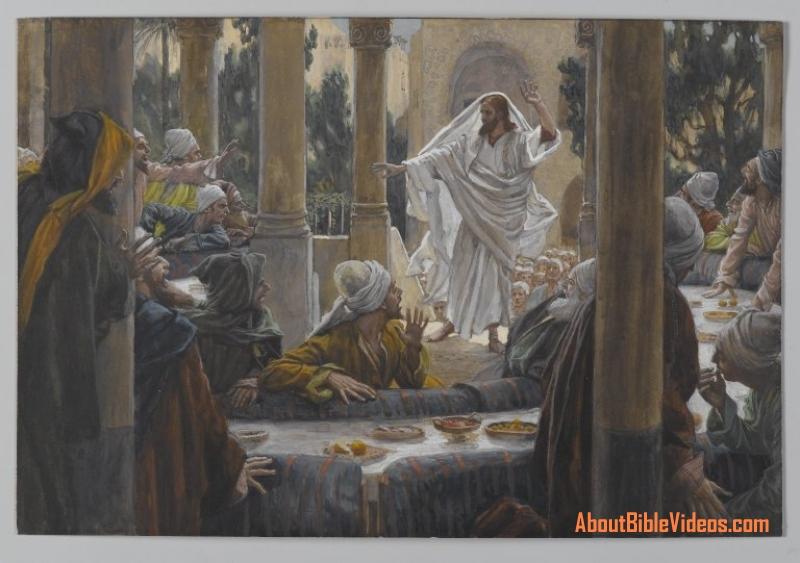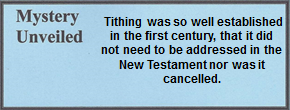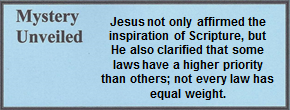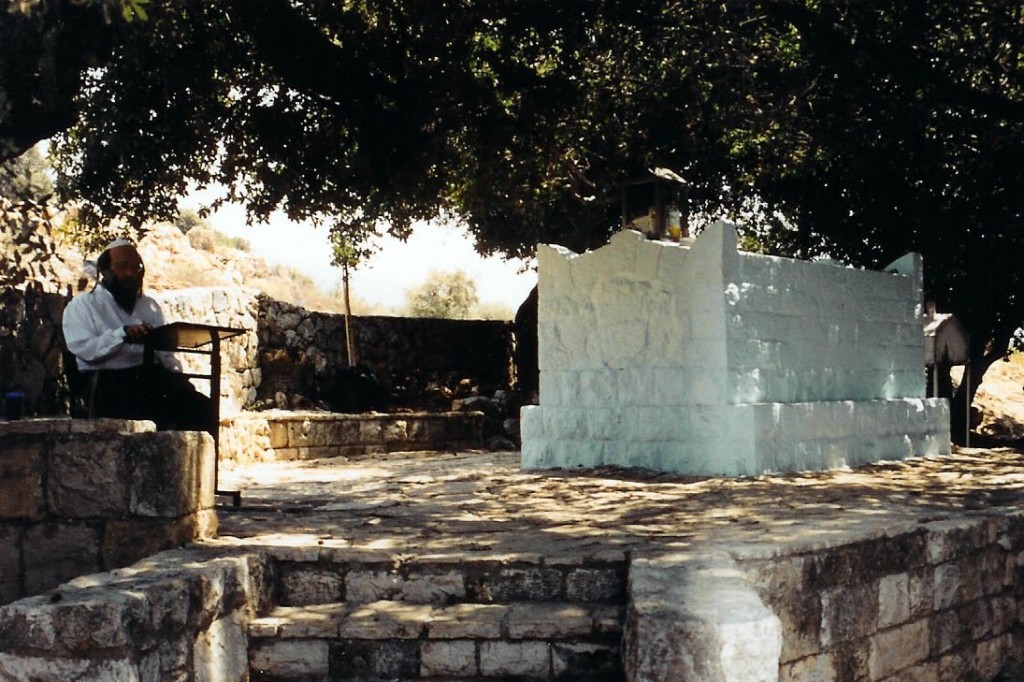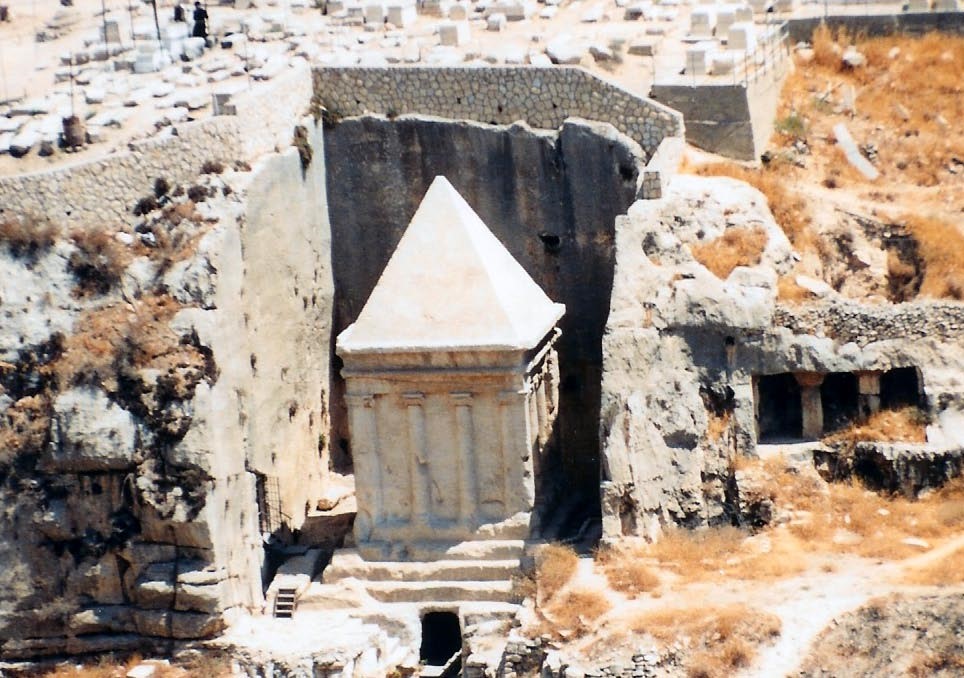13.05.02 Mt. 23:13-15
FALSE RELIGIOUS PIETY CONDEMNED
13 “But woe to you, scribes and Pharisees, hypocrites! You lock up the kingdom of heaven from people. For you don’t go in, and you don’t allow those entering to go in.
[14 “Woe to you, scribes and Pharisees, hypocrites! You devour widows’ houses and make long prayers just for show. This is why you will receive a harsher punishment.]
15 “Woe to you, scribes and Pharisees, hypocrites! You travel over land and sea to make one proselyte, and when he becomes one, you make him twice as fit for hell as you are!
The passage of Matthew 23:13-32 should ideally be treated as a single literary unit, but it is divided into four units for the purpose of explaining each section. Note the poetic structure of this passage (outlined below), and that it points to the failure of leadership as the emphasis of this narrative.
- v. 13 Failure to recognize Jesus
- 2. 15 Superficially zealous and doing more harm than good
- vv. 16-22 Incorrect use of Scripture
- 4. 23-24 Failure of religious leaders to recognize thrust of Scripture
3’. vv.25-26 Incorrect use of Scripture
2’. vv. 27-28 Superficially zealous and doing more harm than good
1’. vv. 29-32 Heirs of those who failed to recognize God’s prophets.
The chiastic pattern has repeated ideas (i.e. 2 and 2′) that focus on the main point, which, on line 4, is the failure of the religious leaders to recognize the thrust of Scripture that is to bring man to a close relationship with God (line 4). Jesus was not the only one who condemned the leading Pharisees and Sadducees, the condemnation of scribes and teachers who do not follow their own instruction is well known in rabbinic literature.[1] The irony is that all forms of post second-temple Judaism originated from the surviving Pharisees.
Following this heated discussion with the religious leaders Jesus proceeded to pronounce upon them seven condemnations, commonly known as the “seven woes.” There is reason to believe that Matthew (Ch. 23) recorded them in the precise order as spoken by Jesus. Matthew’s account reveals a very precise chiastic literary structure[2] that has the focus upon the fourth woe, where the basic failure of the Pharisaic teachers is laid out.[3]
While Luke and Matthew both recorded the condemning words of Jesus against the leading Pharisees, Matthew apparently made a point of it. Yet there were essentially two kinds of Pharisees:
- Those who had a burning passion to serve and love God and
- Those who were arrogant legalists determined to observe the Oral Law rather than the Written Law and do whatever was necessary to protect their own interests. This group filled so many verses of the gospels that those who loved and served God passionately are almost forgotten. It is this group of leading Pharisees to whom the “woes” were given by Jesus, and later by the editors of the Talmud.
The three woes pronounced upon the leading Pharisees were for specific reasons:
- The first woe was for preventing people from receiving and participating in the Kingdom of God that Jesus was promoting. These leading Pharisees were supposed to lead the people to God, but instead, they prevented them from hearing the message of salvation and the Kingdom of God.
- The second woe was because of their covetousness and hypocrisy. They had attained wealth and power and desired more of the same, with no regard to following priests, and certainly not for the common Jewish peasants.
- The third woe was focused on their evangelistic efforts. While they won many Gentiles to Judaism, they also converted them to a perverted form of Judaism – making them twice the children of hell as they were.
It is a well-known principle in history that, whenever the ceremonial is elevated above the rank of the moral, the moral teaching is lost in the eloquent rhetoric of the ceremonial. The scribes and Pharisees had learned how, by arbitrary exegesis, to explain away the weightiest moral obligations and make up for the neglect of them by multiplying ritual ceremonial observances. As a result, these men of pride and arrogance were able to indulge in selfishness and greed while justifying their self-defined world of “holiness.” Jesus probably recognized this when He first encountered them in the temple at the age of 12.
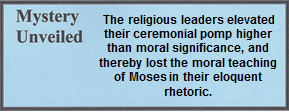
“Woe to you.” Seven times Jesus hammered the Pharisees with this ominous warning – a warning underscored by the number seven that is representative of “completeness” and “wholeness.” The phrase woe, which in Greek is ouai, refers to both anger and sorrow.[4] The term woe is a dirge, a lament for the dead.[5]This time Jesus was not only extremely upset with them but He underscored woe seven times.[6] Utter destruction was in the forecast that became reality in A.D. 70. Ironically, in the Mishnah and Talmud seven kinds of Pharisees were described by other Jewish writers.[7] Centuries later rabbis recorded their own condemnation of these seven types of leading Pharisees whom Jesus condemned. The Talmud gives a brief description of each:[8] A portion is as follows:
Our rabbis have taught: There are seven types of Pharisees: the Shikmi Pharisee, the Nikpi Pharisee, the Kizai Pharisee, the ‘Pestle,’ Pharisees, the Pharisee [who constantly exclaims] ‘What is my duty that I may perform it?’ the Pharisee from love [of God] and the Pharisee from fear.
- The Shikmi Pharisee – he is one who performs the action of Shechem because of his self-interest.
- The Nikpi Pharisee – he is one who knocks his feet together since he is so humble that he is constantly falling.
- The Kizai Pharisee – Rabbi Nahman ben Isaac said: He is one who makes his blood flow against walls. His humility causes his head to bow so low that he is constantly walking into various objects.
- The Pestle Pharisee – Rabbah ben Shila said: [His head] is bowed like a [pestle in] a mortar to insure that he would not see a woman.
- The Pharisee [who constantly exclaims] “What is my duty that I may perform it? – but that is virtue! – Nay, what he says is, ‘What further duty is for me that I may perform it?’ He desires to work hard because he is filled with the fear of judgment.
- The Pharisee from fear – Abaya and Raba said to the tanna [who was reciting this passage], Do not mention ‘the Pharisee from love and the Pharisee from fear’; for Rabbi Judah has said in the name of Rabbi Eleazer: A man should always engage himself in the Torah and the commandments even though it be not for their own sake[9] because from [engaging in them] not for their own sake, he will come [to engage in them] for their own sake. Rabbi Nahman ben Isaac said: What is hidden is hidden, and what is revealed is revealed. The Great Tribunal will exact punishment from those who rub themselves against the walls.[10]
- The “Pharisee from love” who believes he obeys God faithfully.
Babylonian Talmud, Sotah 22b[11]
The Jerusalem Talmud provides additional insight on these seven classifications – five bad and two good. Five bad Pharisees are:
- The Shikmi Pharisee who performs the action of Shechem was circumcised from an unworthy motive (Gen. 34) and carries his religious duties upon his shoulders (Heb. Shekem)[12] ostentatiously.[13] This is why Jesus responded with the word “shoulder” in Matthew 23:4.
- The Nikpi Pharisee walks with exaggerated humility with the attitude of, Spare me a moment that I may perform a commandment.[14] He prefers to wait awhile so someone else can watch him do a good deed.[15]
- The Kizai Pharisee, in his vain attempt to be righteous and holy, avoids looking at women and thereby injures himself by walking into walls.[16] He has chosen to be blind.
- The Pestle Pharisee walked around so everyone noticed that he was avoiding temptation by hanging his head down.
- The Pharisee who desires additional duties is attempting to please God by his own efforts.[17]
Two good Pharisees are
- There are those God-fearing Pharisees who faithfully observed the commandments, they are truly righteous and steadfast, like Job.
- The God-loving Pharisee is one who had a heart affection for God as did Abraham and Moses.
As to the Pharisees from love and fear, these words are used in a manner steeped in laws and tradition. There is a sense of love of the promised heavenly rewards and fear of the punishment for transgressing the laws of the commandments.[18] However, the “love” is for the rewards and is not focused on God. The “fear” is defined as a fear of punishment and not a respectful attitude toward God. The missing element is the affectionate love and desire to know God in a personal manner. As previously stated, the Jews had concluded that, as the chosen people, they were a special privileged class before God. In reality, however, they were the chosen people for being chosen to serve Him, a calling the leadership had failed miserably to endorse.[19]
Babylonian Talmud also emphasized the cruelty of temple priests by the leading Sadducees. The Sadducean House, or Clan, of Hanan included the family of Annas (or Ananias) with his son-in-law, Caiaphas.[20] The evilness of these high priests at the time of Christ was so horrific that they were known to physically beat other priests and people with staves. This point is underscored by the fact it is mentioned in the first and last stanzas, thereby framing the poem. Unfortunately, their evilness did not end there, as the House of Kathros was a priestly family of scribes who used contracts and agreements to swindle and cheat common Jews of their hard-earned income. Ishmael was specifically identified in relationship to his father because there evidently was more than one high priest by that name and the authors of the Talmud were careful not to implicate an innocent Ishmael. This is a mid-sixth century document of first-century events that obviously occurred within the temple.
Woe is me because of the House of Beothus
woe is me because of the staves.
Woe is me because of the House of Hanan,
woe is me because of their whisperings.
Woe is me because of the House of Kathros,
woe is me because of their pens.
Woe is me because of the House of Ishmael, son of Phiabi,
woe is me because of their fists.
For they are high priests,
and their sons are treasurers,
and their sons-in-law are trustees,
and their servants beat the people with staves.
Babylonian Talmud, Pesahim 57a
Little wonder then, that Jesus reflected upon the words of a prophet. All the prophets were not only concerned about social justice, but also about the spiritual welfare of the nation that shaped and directed the culture. In this case, He quoted from the prophet Amos.
Woe to those who are at ease in Zion and to those who feel secure on the hill of Samaria — the notable people in this first of the nations, those the house of Israel comes to.Amos 6:1
The leading Pharisees and Sadducees were greatly offended that Jesus made that frontal attack on them. In this culture, this was highly offensive, of which there is no parallel in Western culture. Furthermore, the common people who heard Jesus realized that the words of Amos not only applied to his day, but were also prophetic for their time. They remembered similar words from Jeremiah who was concerned about scribes and teachers who did not follow their own teaching.
How can you claim, ‘We are wise; the law of the Lord is with us’? In fact, the lying pen of scribes has produced falsehood.
Jeremiah 8:8
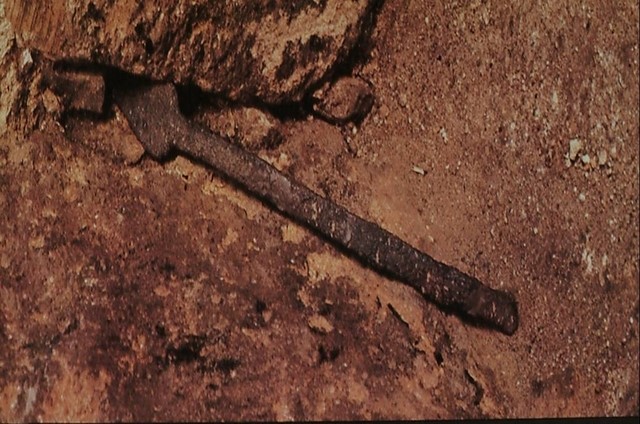
13.05.02.A. A Roman Sword in the ruins of the House of Kathros. When archaeologists uncovered this first century priestly home, they found a sword, human bones, and ashes of an intense fire. The evidence supports what Josephus said in his book Wars, that on the 8th day of Elul, in A.D. 70, the Romans stormed the Upper City, set it ablaze and put its inhabitants to the sword. Wikipedia Commons.
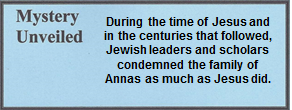
The corrupt priesthood was not missed by Josephus either. He commented on Ananus who was the high priest only for the year 63, (the son of the Ananus who was instrumental in the crucifixion of Jesus). The historian mentioned Porcius Festus, who was the procurator of Judea and Jerusalem from A.D. 59 to 61, but had died prior to the topic below:
Now the report goes, that this elder Ananus proved a most fortunate man, for he had five sons who all performed the office of a high priest to God, and he had himself enjoyed that dignity a long time formerly, which never happened to any other of our high priests: but this younger Ananus, who, as we have told you already, took the high priesthood, was a bold man in his temper and very insolent, he was also of the sect of the Sadducees who are very rigid in judging offenders above all the rest of the Jews, as we have already observed, when, therefore, Ananus was of this disposition, he thought he had now a proper opportunity [to exercise his authority].
Festus was now dead and Albinus was but upon the road; so he (the younger Ananus) assembled the Sanhedrin of judges and brought before them the brother of Jesus, who was called Christ, whose name was James and some others; and when he had formed an accusation against them as breakers of the Law, he delivered them to be stoned.
Josephus, Antiquities 20.9.1 (198-200)[21]
The corruption of the Sanhedrin and the Sadducees continued even though the leadership changed repeatedly. In this case, it was James, the brother of Jesus who was was brought before the local governor who sentenced him to death by stoning. The culture of corruption continued until the Romans slaughtered the entire Sadducean clan during the temple’s destruction.
On a side note, it is wrong to say that all the Hebrew prophets condemned the proverbial “rich and famous.” For one to have had a servant or secretary was reflective of some degree of wealth. Jeremiah had a scribe by the name of Baruch and Elijah and Elisha had their servants. Daniel, one of the most studied prophets, lived in the king’s court. However, all Hebrew prophets were highly critical of the rich who had no concern for God, the poor, and lived only for the purpose of attaining more wealth.
“You devour widows’ houses.” Since scribes wrote wills and conveyances of property, they abused the elderly and widows by conveying their properties to the temple rather than for the benefit of the families. The Greek word for devour is katesthio (2719), and it means to forcibly acquire or by appropriation.[22] Consequently, many widows lived their last years homeless and in destitute poverty. This was in direct disobedience to Exodus 22:22 which prohibited anyone from taking advantage of widows and the poor. According to Josephus, some scribes were also Pharisees who accepted bribes.[23] They, as well as the leading Pharisees, Sadducees and elders, justified their actions by their own rules. In fact, the Sadducees even had their own penal code that was considerably harsher than the penal code of the Pharisees.[24] Note the following comparison, which is one of seven (see 02.01.14.Q1):[25] The Sadducees demanded that false witnesses be put to death while the Pharisees permitted punishment by eighty scourgings.[26] This is interesting, because the Sadducees acquired false witnesses in their case against Jesus. This form of injustice was prophesied in Amos 4:5, Isaiah 29:13, and Jeremiah 12:2. Claiming to be teachers of God’s Word, these wicked men will be judged more strictly (Jas. 3:1).
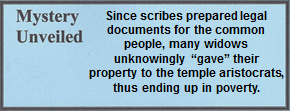
“You lock up the Kingdom of Heaven.” The religious shut themselves and others out of the Kingdom of Heaven even though they paid their tithes. They paid tithes on herbs of small value (Mt. 23:23) while ignoring the more important issues of life such as caring for orphans and widows. This passage reveals the significance of obedience, love, and holiness in the sanctification process of becoming transformed into the image of God.
13.05.02.Q1 Did the Jews believe in winning the Gentiles to God?
Yes. There is evidence that they did and some scholars believe Jewish evangelism to the Gentiles began after the Maccabean Revolt. Jewish leaders were criticized by Jesus for making their new converts agents of Satan (Mt. 23:15). Had evangelism disappeared from Judaism, then Jesus would not have criticized them on this issue. On the other hand, while some sought to win Gentiles to the faith, John sought to bring Jews to righteousness (see commentary on Mt. 23:15).
The statement, “You travel over land and sea to make one proselyte,” illustrates the point that not only did the Pharisees attempt to win Gentiles to their faith, but also God-fearers,[27] Gentiles who worshiped the God of Abraham, Isaac, and Jacob. A proselyte (Greek: proselutos) was someone who made the conversion to Judaism and accepted all of the ceremonial laws, rules and regulations of the faith.[28] By definition, a proselyte is someone who has approached or is drawn near.[29] It is a term applied to anyone who makes a religious conversion to any faith.
As has been previously stated, within Judaism there were many religious sects. Some went to great efforts to win Gentiles to Judaism, while others believed that was a wasted effort. Yet the evangelistic efforts did produce some interesting results. But clearly, Jesus was born in a day of Jewish evangelism.[30] Note the following:
- Some scholars believe the Jews in Rome had such an evangelistic fever that the authorities expelled them from the city in 139 B.C.
- Josephus indicated that the men of Damascus in the first century B.C. became gravely concerned because their wives became “addicted to the Jewish religion.”[31]
- A Roman nobleman by the name of Aquilla not only converted to Judaism, but became a student in the rabbinical academies of Shemaiah and Abtalion.[32]
- Jewish writings attest to the fact that Pharisaic leaders prior to Herod the Great were descendants of proselytes.[33] This was a problem for some as they believed only those with “proper” a genealogical history could become teachers.
- The Babylonian Talmud mentions many converts in the city of Mahoza in Babylon.[34]
- Another example of this evangelistic effort recorded by Josephus is of two Jewish men who lived outside Israel and convinced some rather important individuals to accept the Jewish faith. The account occurs several years after Jesus, when Jerusalem suffered greatly from a severe famine, possibly the same famine mentioned in Acts 11:28-30. At that time, Queen Helena of Abiabene responded to the need by providing grain to the city to feed the poor, all because two Jewish evangelists reached into the royal courts, where “Helena, queen of Abiabene, and her son Izates, changed their course of life and embraced the Jewish custom.”[35] Josephus wrote the following account on this matter:
Now, during the time Izates abode at Charax-Spasini, a certain Jewish merchant, whose name was Ananias, got among women that belonged to the king, and taught them to worship God according to the Jewish religion. He, moreover, by their means, became known to Izates: and persuaded him, in like manner, to embrace that religion……it also happened that Helena, about that same time, was instructed by a certain other Jew.
Josephus, Antiquities 20.2.3 (34, 35b)
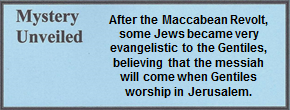
The descendants of some proselytes became very influential in the Jewish world. For example, Shemaiah and Abtalion, two highly respected teachers of the mid-first century B.C. were sons of proselytes.[36] Another teacher was Rabbi Johanan who lived in Jerusalem at the time of Jesus, was the son of the Hauranite.[37] Clearly the evangelistic efforts were effective, but Jesus said that the Pharisees made them just as bad as they themselves were.
It should be noted that even though some Pharisees were very evangelistic, Jesus apparently did not give any credit for this. In fact, He condemned it saying that the converts were as bad as they were (Mt. 23:15). One Jewish scholar said this zeal for evangelism was based upon Isaiah 2:20 and Jeremiah 16:18 and peaked in the Hasmonean period (c 165 BC – 37 BC).[38] Therefore, by the time Jesus spoke on the issue, the Pharisees had a long history of evangelism that in this case, was considered to be “bad fruit.”
At the end of the Maccabean Revolt the Jews realized they had a new era of freedom and many became evangelistic because they believed this would hasten the coming of the messiah. They read prophecies such as Jeremiah 16:19 and concluded that the nations would soon come to Jerusalem to worship God. These early evangelists evidently were highly effective, as the Babylonian Talmud states that because of the growing number of converts to Judaism, many of the leaders in Jerusalem prior to Herod the Great were proselytes.[39] There were many conversions in Babylon as well.[40]
“Twice as fit for hell as you are.” The phrase literally means, “A son of hell.” This indicates that the religious leaders trained new converts to break their own biblical commands while propagating their own agendas. The phrase “son of hell” is also a Hebraism in reference to an incredibly evil and sinful person,[41] denunciation spoken centuries earlier by the prophets Isaiah (5:8ff; 10:1-5), Habakkuk (2:6ff), and others. The Pharisees made the connection. Yet not all Jews were in the category portrayed by Jesus and espoused by evangelical preachers. Jesus was speaking to a small minority of aristocratic leaders, as did the author of the Pesahim in the Babylonian Talmud. Another author of the Yebamoth section of the same Talmud wrote that those who come to the faith should first seriously consider the cost of such a decision. Note the following:
Our rabbis taught: If at the present time a man desires to become a proselyte, he is to be addressed as follows: “What reason have you for desiring to become a proselyte; do you not know that Israel at the present time is persecuted and oppressed, despised, harassed and overcome with afflictions?” If he replies, “I know and yet am unworthy,” he is accepted forthwith, and is given instruction in some of the minor and some of the major commandments. He is informed of the sin (of the neglect of the commandments) Gleanings, the Forgotten Sheaf, the Corner, and the Poor Man’s Tithe. He is also told the punishment for the transgression of the commandments. Furthermore, he is addressed thus: “Be it known to you that before you came to this condition, if you had eaten suet you would not have been punishable with kareth, if you had profaned the Sabbath you would not have been punishable with stoning; but now were you to eat suet you would be punished with kareth; were you to profane the Sabbath you would be punished with stoning.” And as he is informed of the punishment for the transgression of the commandments, so he is informed of the reward granted for their fulfillment. He is told, “Be it known to you that the world to come was made only for the righteous and that Israel at the present time is unable to bear either too much prosperity or too much suffering.” He is not, however, to be persuaded or dissuaded too much. If he accepted, he is circumcised….he is deemed to be an Israelite in all respects.
Babylonian Talmud, Yebmoth 47a, b
This hardly appears to be a passage that would lead new converts into the depths of hell. In fact, Jews throughout history have always been careful to inform new converts of the cost of becoming Jewish. Their concern for the lost was portrayed in one of their regular synagogue prayers (see the Thirteenth Benediction).[42]
The Jewish people had a blessing or benediction for nearly every aspect of life. For example, there is a benediction of thankfulness for the holiness of God (no. 3), a blessing of thankfulness for the healing of the sick (no. 8), and thankfulness for the mercy of God. However, concerning those who became followers of Jesus, first century Jews added a so-called blessing that, in reality, was a condemnation. (Compare with Lk. 11:1-4 and Mt. 6:9-15).
For apostates, let there be no hope, and the dominion of arrogance do Thou speedily root out in our days; and let the Nazoreans and the heretics perish as in a moment, let them be blotted out of the Book of the Living and let them not be written with the righteous. Blessed art Thou, O Lord, who humblest the arrogant.
Twelfth Blessing of The Eighteen Benedictions[43]
After the destruction of Jerusalem and the temple, the Romans permitted the Jews to open a school for biblical studies west of Jerusalem in the village of Jabneh. It was there that, according to Jewish tradition, the Eighteen Benedictions were arranged, or re-arranged by Shim’on, a cotton merchant under the direction of Rabbi Gamaliel II, although the Benedictions existed since the first century B.C. The rabbi held the position of the Patriarch after the year A.D. 80 and the Benedictions were promoted throughout the Jewish world.[44]
Finally, other rabbinic evidence that Jews were interested in the welfare of converts is also found in the Babylonian Talmud:
It was taught: “Rabbi Hanania son of Rabbi Simeon ben Gamaliel said: ‘Why are proselytes at the present time oppressed and visited with afflictions? Because they had not observed the seven Noahide Commandments?’”[45]
Rabbi Jose said: One who has become a proselyte is like a child newly born. Why then are proselytes oppressed? Because they are not so well acquainted with the details of the commandments as the Israelites.
Abba Hanan said in the name of Rabbi Eleazer: “Because they do not do it out of love, but fear.” Others said: “Because they delayed their love under the wings of the Shechinah.”
Babylonian Talmud, Yebamoth 48b-49a[46]
[1]. For further study, see Weinfeld, “The Charge of Hypocrisy in Matthew 23 and in Jewish Sources.” 52-58.
[2]. See “Chiastic Literary Structure” in Appendix 26.
[3]. Carson, “Matthew.” 8:480; Bock, Jesus According to Scripture. 343-37.
[4]. Lang, Know the Words of Jesus. 182.
[5]. Smith, Augsburg Commentary on the New Testament: Matthew. 157, 274.
[6]. See also 08.01.02, 09.02.02, 11.02.05, and 13.05.02-05.
[7]. See also Babylonian Talmud, Berakhot 14b as cited by Boker. The Talmud: Selected Writings. 81; Stemberger. Jewish Contemporaries of Jesus: Pharisees, Sadducees, Essenes. 43-45.
[8]. Farrar, Life of Christ. 356-57; Barclay, “Matthew.” 2:281-85; Lightfoot, A Commentary on the New Testament from the Talmud and Hebraica. 2:73-75.
[9]. From pure and disinterested motives.
[10]. In simulated humility. Others render: who wrap themselves in their cloaks. The meaning is that hypocrisy is of no avail against the Divine Judge who reads the heart.
[11]. Weinfeld, “The Charge of Hypocrisy in Matthew and in Jewish Source.” 53.
[12]. Moseley, Yeshua: A Guide to the Real Jesus and the Original Church. 106.
[13]. Jerusalem Talmud, Berakhot 14b.
[14]. Babylonian Talmud, Seder Nashim Sotah 22b, 3:112.
[15]. Moseley, Yeshua: A Guide to the Real Jesus and the Original Church. 105-06.
[16]. Babylonian Talmud, Seder Nashim Sotah 22b, 3:112.
[17]. Babylonian Talmud, Seder Nashim Sotah 22b, 3:113.
[18]. Babylonian Talmud, Seder Nashim Sotah 22b, 3:113.
[19]. Moseley, Yeshua: A Guide to the Real Jesus and the Original Church. 105-07.
[20]. Crossan and Reed, Excavating Jesus. 212.
[21]. Brackets by Danby, ed. Mishnah.
[22]. Vine, “Devour.” Vine’s Complete Expository Dictionary. 2:166.
[23]. Josephus, Wars 1.29.2 (571-72).
[24]. Megillah, Taanith 10; Jeremias, Jerusalem in the Time of Jesus. 127. This may explain why the Sadducees were before Pilate demanding a crucifixion and the Pharisees are not mentioned.
[25]. For additional examples, see 02.01.14 “Pharisees,” in particular 02.01.14.Q1 “What were the four levels of Pharisees?” as well as 02.01.16 “Sadducees.”
[26]. Mishnah, Makkoth 1.3 and 1.5; See 15.03.07.
[27]. Another reference to God-fearers is found in Acts 17:4 that refers to the devout Greeks of Thessalonica.
[28]. The Noahide Commandments were and continue to be, in the opinion of orthodox Jews, divine laws that Gentiles need to obey to obtain favor with God if they did not want to convert to Judaism. See Appendix 17 for more information.
[29]. Barclay, “Matthew.” 2:290.
[30]. See also Dugas, “The Reaction of the Hellenistic World to Judaism.” 67-73.
[31]. Josephus, Wars 2.20.2.
[32]. Moseley, Yeshua: A Guide to the Real Jesus and the Original Church. 127.
[33]. Babylonain Talmud, Gittin 57b and Yoma 71b(Soncino, ed.).
[34]. Babylonain Talmud, Kiddushin 73a (Soncino, ed.).
[35]. Josephus, Antiquities 20.2.1, see also 20.2.1-4 for other conversions. Abiabene is in the area of modern Iraq and Iran where, according to tradition, the Assyrians relocated a number of the so-called ten lost tribes centuries earlier. Evidently some of the Jews of Kurdistan converted to the Christian faith, including the King, Monobaz, whose mother was Queen Helena. http://www.jcjcr.org/kyn_article_view.php?aid=20 Retrieved December 13, 2012.
[36]. Babylonian Talmud, Yoma 71b; Gittin 57b.
[37]. Mishnah, Sukkah 2.7.
[38]. Kaufmann, Matenot Ha-Kodesh. 101-15; Moseley, Yeshua: A Guide to the Real Jesus and the Original Church. 125.
[39]. Babylonian Talmud, Gittim 57b; Babylonian Talmud, Yoma 71b.
[40]. Babylonian Talmud, Kidduboth 73a.
[41]. Bilbrant, “Matthew” 497.
[42]. Bailey, Jesus through Middle Eastern Eyes. 94; See Appendix 18.
[43]. Boring, Berger, and Colpe, eds. Hellenistic Commentary to the New Testament. 211; Bailey, Jesus through Middle Eastern Eyes. 94, 106. See also ‘The Eighteen Benedictions” in Appendix 18.
[44]. Herford, 127.
[45]. The Noahide Commandments are listed in Appendix 17.
[46]. Notice that Abba Hanan’s title of Abba, means father, and is the same title Jesus used in reference to addressing His Father in in the Lord’s Prayer.
